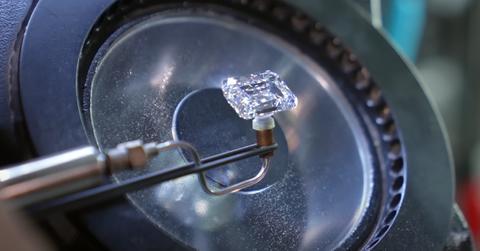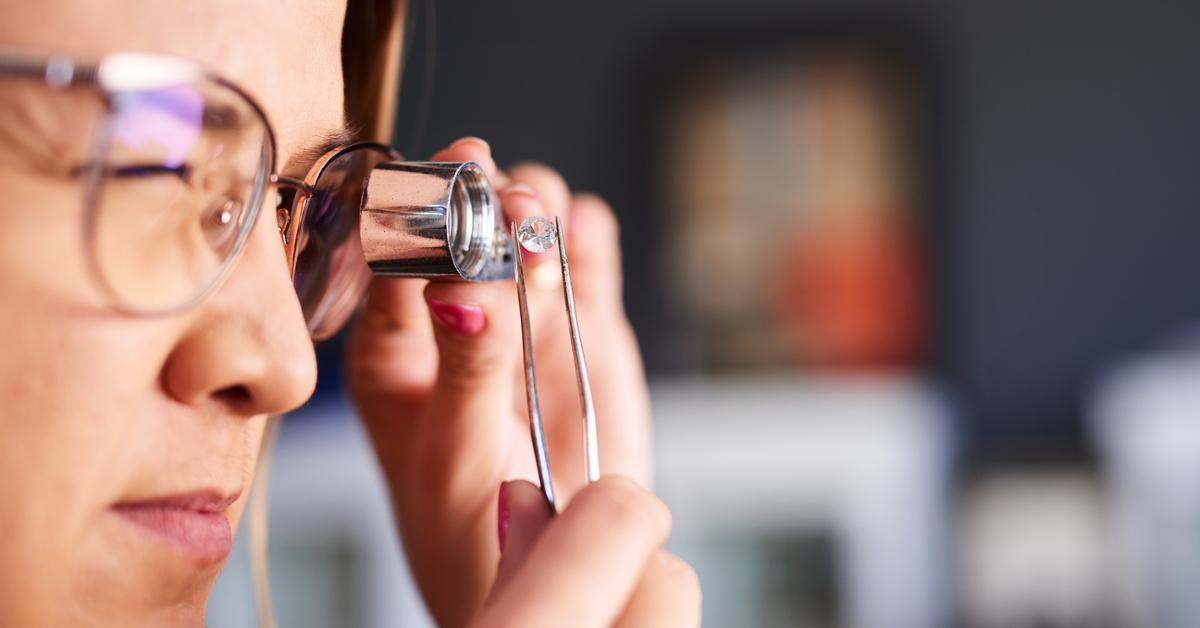Lab-Grown Diamonds Are a Girl’s Best Friend — But How Are They Made?
Published Nov. 20 2023, 3:34 p.m. ET

The Gist:
- Lab-grown diamonds are a cheaper, more ethical, and more sustainable alternative to mined diamonds.
- They are genuine diamonds, unlike cubic zirconia and synthetic moissanite.
- There are two lab-grown diamond methods: CVD and HPHT.
- To a naked, untrained eye, both CVD and HPHT diamonds look just like natural diamonds.
- HPHT diamonds are higher quality, making them more expensive than CVD diamonds.
If you've ever seen Edward Zwick's 2006 film Blood Diamond, or noticed the uptick in non-traditional engagement rings, then you might know a thing or two about the evils of diamond mining. Under the Kimberley Process, blood diamonds, also called conflict diamonds, are defined as "rough diamonds used to finance wars against governments." Since 2003, the international trade regime has set out to eliminate blood diamonds from the global supply chain, attaching certificates to rough diamonds that have not aided rebel movements. According to Time, this system did help the problem, but "it remains riddled with loopholes, unable to stop many diamonds mined in war zones or under other egregious circumstances from being sold in international markets."
Additionally, natural diamond mining takes a toll on the environment. NYC's Frank Darling company relayed that naturally sourced diamonds produce over 125 pounds of carbon and consume over 126 gallons of water for every carat. In comparison, lab-grown diamonds produce under 10 pounds of carbon and consume just under 20 gallons of water per carat.
If "putting a ring on it" must include crystalized solid carbon, lab diamonds are the more ethical and eco-friendly option.
The mere phrase "lab-grown" has an artificial feel to it, seemingly cheapening the physical depiction of your all-consuming love. The truth is that lab-grown diamonds look nearly identical to mined diamonds, are just as hard, and are more budget-friendly— which is perfect for those who've always dreamed of showcasing a giant rock on their left hand. So, how are lab-grown diamonds made?

Lab-grown diamonds are made by one of two methods: CVD or HPHT.
The word "grown" implies that a tiny diamond seed is planted and watered. Though this makes for some interesting (and oddly adorable) mental imagery, it's not quite like that.
The chemical vapor deposition (CVD) method, however, does rely on a diamond "seed." According to London-based jeweler Queensmith, the CVD method places a teeny-tiny slice of natural diamond into a chamber, exposing it to "carbon-rich gas" and super high temperatures (1,652 to 2,192 degrees Fahrenheit).
"Over a matter of just weeks, the carbon gas ionises and the particles stick to the original diamond slice, before eventually crystallizing," Queensmith explained.
Plasma reactors at Greenlab Diamonds in India, for example, mimic the environments of naturally occurring diamonds. Inside the reactor, carbon-containing gases (like methane) are broken down into carbon atoms, which build atop a single crystal seed and form a rough diamond in about six weeks.
The high pressure high temperature (HPHT) method sees pure carbon (sometimes graphite) "pressed within a metal cube and exposed to immense heat (2,372 to 2,912 degrees Fahrenheit) and pressure through electric pulses," according to Queensmith. Carbon then breaks down and crystallizes. Leftover fragments of metal (like iron, nickel, or cobalt) are typically not noticeable via unassisted vision.
The CVD method vs the HPHT method: Which grows a better diamond?
As for which method makes a "better" diamond, Queensmith stated that experts typically prefer the HPHT method, as CVD diamonds sometimes exhibit "spotty internal marks and graining" and an unnatural brown undertone. HPHT treatment is sometimes needed to correct this.
CVD diamonds occasionally boast banded strain patterns, as they have "a cubic shape and only one growth direction," according to Taylor & Hart jewelers. HPHT diamonds grow in "a cuboctahedron shape and have 14 different growth directions."
Ultimately, CVD diamonds are the budget man-made diamond option, as they take less time and space to grow. And while Taylor & Hart celebrates HPHT diamonds for their "clarity and high-quality color," the company sees value in both methods.
Overall, when compared to natural diamonds, lab-grown diamonds are not only cheaper (by about 40 percent, as per Taylor & Hart jewelers), but also more environmentally sustainable. Without a jeweler or gemologist's trained eye and a high-tech gemological microscope, no one will know your precious stone's origin story.